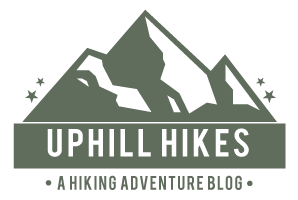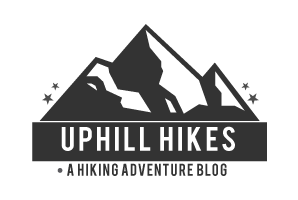05 Feb Smoky Mountain 900 Miler Experience.
I recently completed hiking all of the trails in the Great Smoky Mountain National Park (GSMNP). It took me about 38 years. I started at age 17 when my brother and I did a north-south thru-hike of the Smoky Mountain AT section. There are 800.8 miles of trails in the Smokies. People have determined that all of these trails can be hiked in 900 miles. It took me 1099 miles to hike these 800 miles.
Camping in the Smokies
Some people manage to hike every trail in the Smokies without ever carrying a full pack and camping. Not me. Over 38 years of hiking in the Smokies I camped a total of 62 nights; 30 nights in tents (mostly tarp tent), 23 trail shelter nights, 7 nights sleeping in van or car, and 2 nights sleeping under the stars (cowboy camping). The only shelters I haven’t stayed in are Mollies Ridge, Davenport, and Double Spring Gap. I have stayed at 22 unique backcountry campsites.
When my brother and I first hiked the AT through the Smokies we didn’t know that permits were required. After a sleepless night in a Honda Accord at the Davenport Gap trailhead, a park ranger pulled up. She explained that we needed a backcountry permit to reserve spaces in shelters. With some shelters full, we had to choose shelters that didn’t make for the ideal hiking distance. The shelters in those days were covered with chain link fence to keep bears out. Years later, bear lines were erected at every shelter and every backcountry campsite. Over time the last of the chain link fencing was removed. Laurel Gap Shelter was the last to complete this renovation with the job completed in December 2011. Just a couple of years ago, the park service began charging $4 per night for backcountry camping.
Surviving the Weather
I hiked and camped in all seasons, the toughest hike having been an exhausting trudge through snow up Chasteen Creek and Hughes Ridge to Pecks Corner where I post holed the last mile while counting out steps by 100’s or 50’s to the next rest break. Another time I hiked through snow with cross-country skis strapped to my pack. Reaching the highpoint, I attempted to ski down the AT and Sweat Heifer Creek trail. Yet, another time I was on the Boulevard trail and regretted not having micr0-spikes for the ice. With the growing dark and sloping ice covering the trail there were times I thought I wouldn’t be able to pass. Yet another trip, I spent a night next to Gregory Bald in Sheep Pen gap where I banked snow along the sides of my tarp to block frigid gusts of wind. I slept in two sleeping bags wearing all my clothing — long underwear, fleece cap, clothes, and down jacket.
Sometimes it was wet. I hiked in the rain and even slept wet twice. At Andrews Bald after hiking all day in heavy rains, I found that my pack had filled with water. My sleeping bag was wet and none of my lighters would work. After an uncooked dinner, it was a chilly and uncomfortable night in a wet sleeping bag.
In Cataloochee Valley, I hiked in and camped. The next day I did a loop hike back to my tarp for a 2nd night of camping. During this hike a cold rain turned into snow. Upon returning to camp, I was wet and chilled. I changed into dry clothing, started some hot food, and zipped into my sleeping bag. After finally ridding myself of the chill, I couldn’t bring myself to face another night and day of miserable cold. I packed up and hiked directly back to the van, thus cutting the trip short by a couple of days. If I had stayed, a polar blast would have caught me in the Smokies with snow and low single digit temps. Cutting the trip short had been one of the best decisions I had ever made.
Over the course of the hikes there were many stream crossings. In the Smokies there is usually a split log bridge with rail, but not always. I had one close call when I was nearly swept away in a freezing and swollen Eagle Creek.
Trailhead to Trailhead
Starting from one trailhead and ending at another trailhead means that a little planning is in order. The nice thing about the Smokies are the endless possibilities for loop hikes. Some loops might require tracing steps for a few miles while other loops might be mean coming out at a nearby trailhead. Where the distance was short, I occasionally walked between trailheads. Usually I stashed a bicycle in the woods and rode the bicycle to the trailhead where my van was parked. Using my bicycle meant that I not only hiked much of the Smokies, but also bicycled a great deal of the Smokies. I bicycled much of Hwy 321 between Cosby and Greenbrier and traveled by bicycle on Greenbrier Road, Cherokee Orchard Road, Little River Road, Cades Cove Road, Middle Prong Raod, Wear Cove, Parson Branch Road, Cataloochee Road, Cover Creek Road, Newfound Gap Road, and Clingmans Dome Road. I cycled on Gatlinburg Trail and through the tunnel on Newfound Gap road. I bicycled while it was raining and while it was snowing. I was shuttled once and I used the ferry boat to Hazel Creek. The only time I used cars at both ends was when my brother and I hiked the AT in 1979.
Wildlife
I am always asked how many bears I have seen. I can only recall seeing 2 bears in the Smokies since the 70’s. The first bear was on Bone Valley Trail and I was able to get a blurry photo. Another hiker at the time told me that he saw this same bear come out of the historic cabin at the end of Bone Valley trail. The next bear was on Gabes Mountain trail very near the intersection with Maddron Bald trail. That one was up close and he had as big a scare as I had. More numerous were the bear stories. Whenever hikers gathered at shelters bear stories of all sorts were told. To hear them, you would think that bears were showing up everywhere. In the 70’s, the bears had lost fear of people. At Russell Field Shelter, my brother and I hiked in after a long 14 mile day only to find 3 bears wandering around camp. That night a bear climbed on the shelter chain link fence in an attempt to get into the shelter where we slept. According to the Smoky Mountain Trail book, only one person has been killed in a bear attack. This happened to a lady on Goshen Prong trail not far from Little River trail.
In my opinion, the little Dark Eyed Junco can be scarier than a bear — at least more startling. This little bird builds nests on the ground in little crevices and hideaways between rocks. When hiking past, a Junco is liable to come darting out of a bank right past your face. At that point, the Dark Eyed Junco takes a position on a nearby limb and makes a racket until you move on.
On the bigger side, I have seen more deer than bear, but not as many as most people expect. Most of the wildlife is near roads and cabins. I saw a razorback pig on Lakeshore trail that was definitely not afraid of me. There were large Elk that were mostly in Cattalooche Valley. More worrisome than what I could see was what I couldn’t see — grunts and screeches in the night, glowing eyes bobbing around in the dark. I night hiked 3 times in the Smokies. On Beech Gap trail I heard what might have been another bear. Who knows? For a while it followed me in the dark as I hiked alone. It made low rough grunting sounds that only a big animal could make. Tried as I might, I couldn’t see it with my headlamp. I hiked faster.
People
I nearly always hiked solo, but I enjoyed seeing other people at shelters and campsites. Usually campsites were empty, but there were plenty of people to share stories with at shelters. At night when alone, I liked to listen to talk radio broadcasts or recordings. It somehow made me feel a little less alone. When the weather was bad I would often go without seeing another person. Though Pecks Corner Shelter was booked than capacity, I arrived to find that I was the only occupant. The snow had caused all others to cancel or change their plans.
Some trails are less hiked. Enloe Creek trail and Hannah Mountain trail are good choices to get away from people. Laurel Falls trail from Little River Road to the falls easily wins the award for the most populated trail. This trail is by far the most congested. The fact that the trail is paved with asphalt is a good hint. Cars line the road for hundreds of feet on both sides and in both directions where the trailhead parking lot overflows.
My Favorite Trails in the Smokies
The weather and seasons affect our impressions of the trails, but those prejudices aside, here are my favorite trails.
Alum Cave Trail – Although crowded, this is a classic that shouldn’t be missed. Stay on the top of LeConte at the trail shelter or the lodge.
Chimney Tops Trail – For the sake of a quick heart throbbing adventure, I always recommend this trail to young people that don’t have much time. Again, this is not a trail for getting away from the crowds, but it is thrilling to climb the tops.
Gregory Bald Trail and Hannah Mountain Trail – Gregory Bald can be incredible in the winter. Hannah Mountain Trail is solitude and a beautiful autumn hike.
Balsam Mountain Trail and Mount Sterling Ridge Trail – This high elevation area is my favorite. Laurel Gap Shelter is my favorite shelter. Camp at Mount Sterling and climb the fire tower. Tricorner Knob is a nice high elevation shelter nearby on the AT.
Enloe Creek Trail – Nice remote trail with a beautiful creek. It would be good in combo with Hughes Ridge.
Appalachian Trail – Can’t go wrong. There is a reason this route through the GSMNP is chosen for the AT.
Jenkins Ridge and Hazel Creek Trails – Horace Kephart had his cabin on Jenkins Ridge trail. Jenkins Ridge is remote. Take the ferry to Hazel Creek.
Gabes Mountain Trail – Maybe it was just the time I was there. Peaceful rain dripping from large trees. Hen Wallow Falls.









